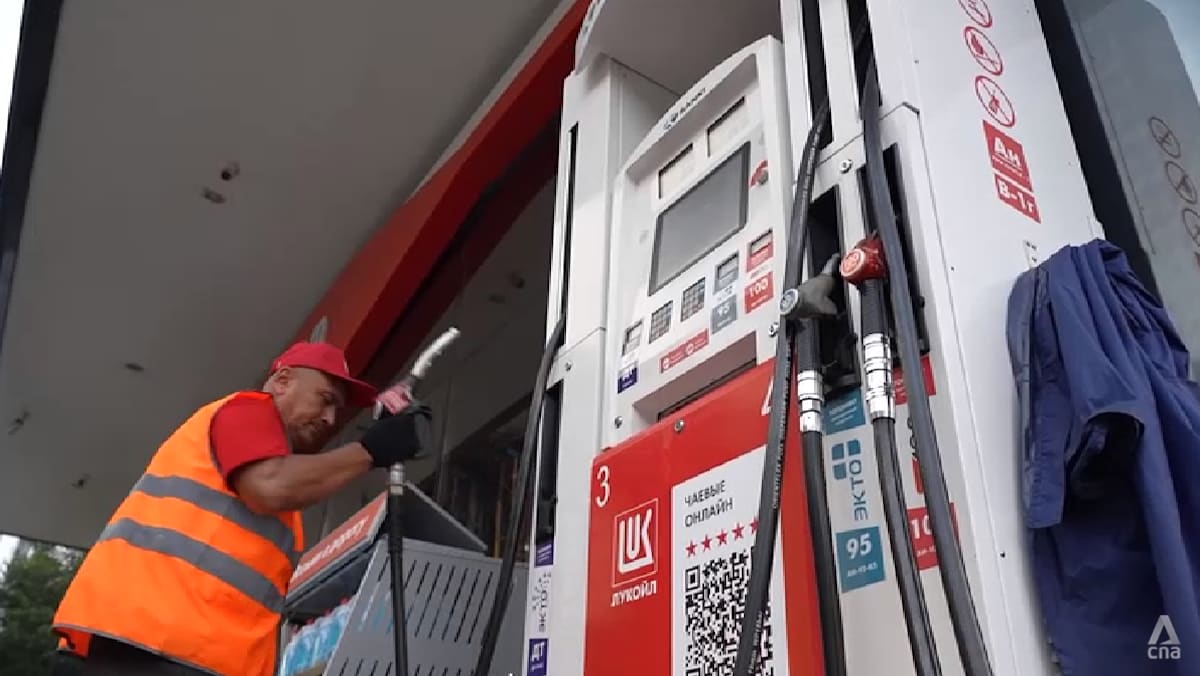LONG QUEUES, HIGH PRICES
For ordinary motorists, even when fuel is available, the cost has become increasingly hard to bear.
In Moscow, drivers say they are feeling the squeeze.
For instance, the AI-95 fuel, Russia’s standard grade of unleaded gasoline, now costs nearly 65 Russian roubles (US$0.78) per litre, up from about 61 roubles per litre.
“The difference is huge. I work in delivery, so I use the car all the time,” said one driver.
“I used to spend 1,000 roubles, and now it is 1,500. That’s an extra 500 roubles gone.”
Experts told CNA that the peak holiday demand and harvest seasons are key reasons for the increase.
Supplies have tightened after Ukrainian attacks damaged refineries and forced major facilities offline.
Igor Yushkov, a professor at the Financial University under the Russian government, said another factor is the fuel damper subsidy – a tax benefit that compensates oil companies for selling petrol domestically at prices below export levels.
But with global oil prices falling over the past year and the rouble strengthening against the dollar, the gap between domestic and export prices has narrowed.
“In the first eight months of this year, the state has reduced damper payments to oil companies by about 46 per cent and this is significant for them,” said Yushkov.
“They have tried to compensate for the loss by provoking an increase in prices at least in the domestic market, so that they can earn this money here.”
